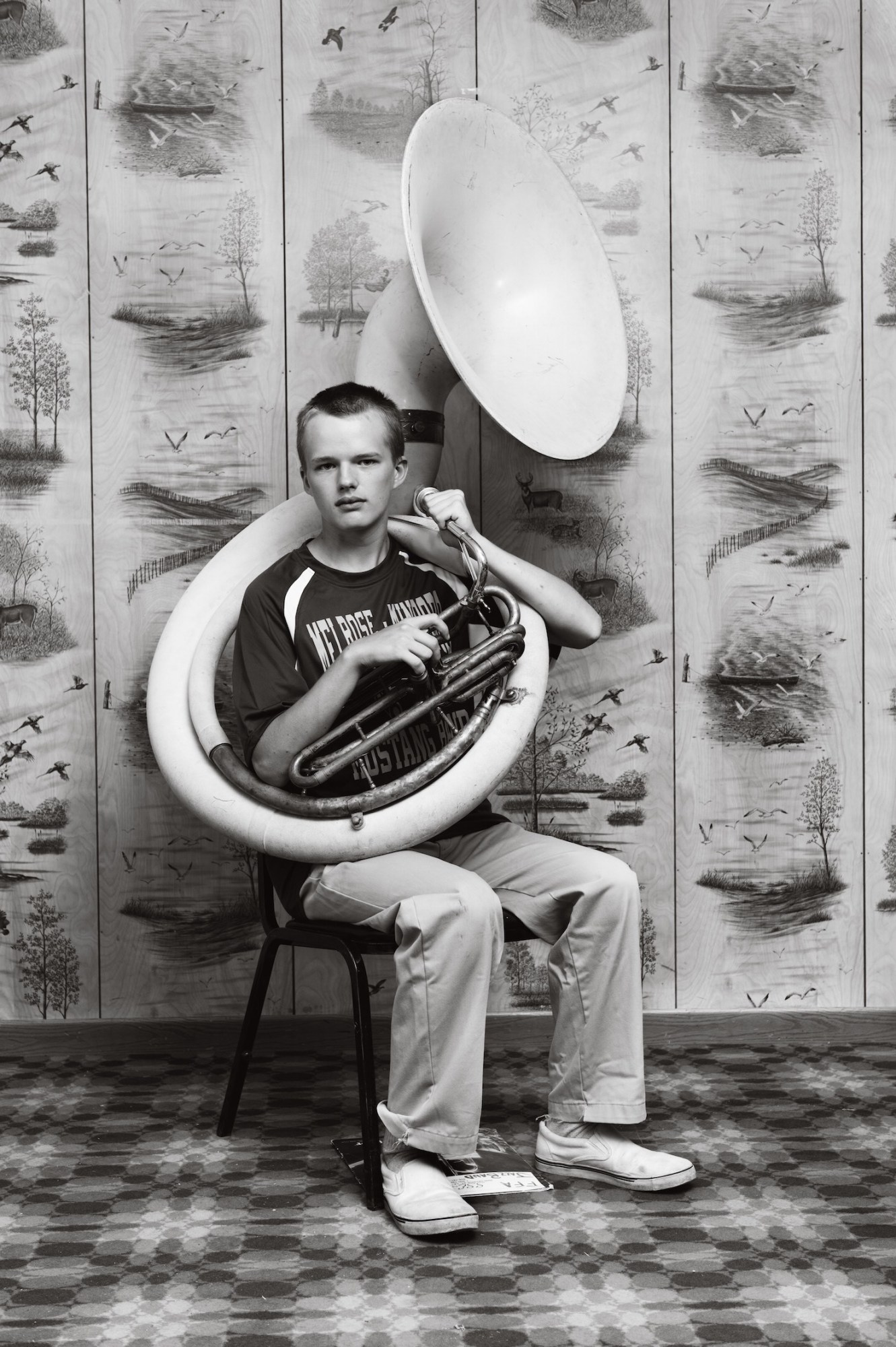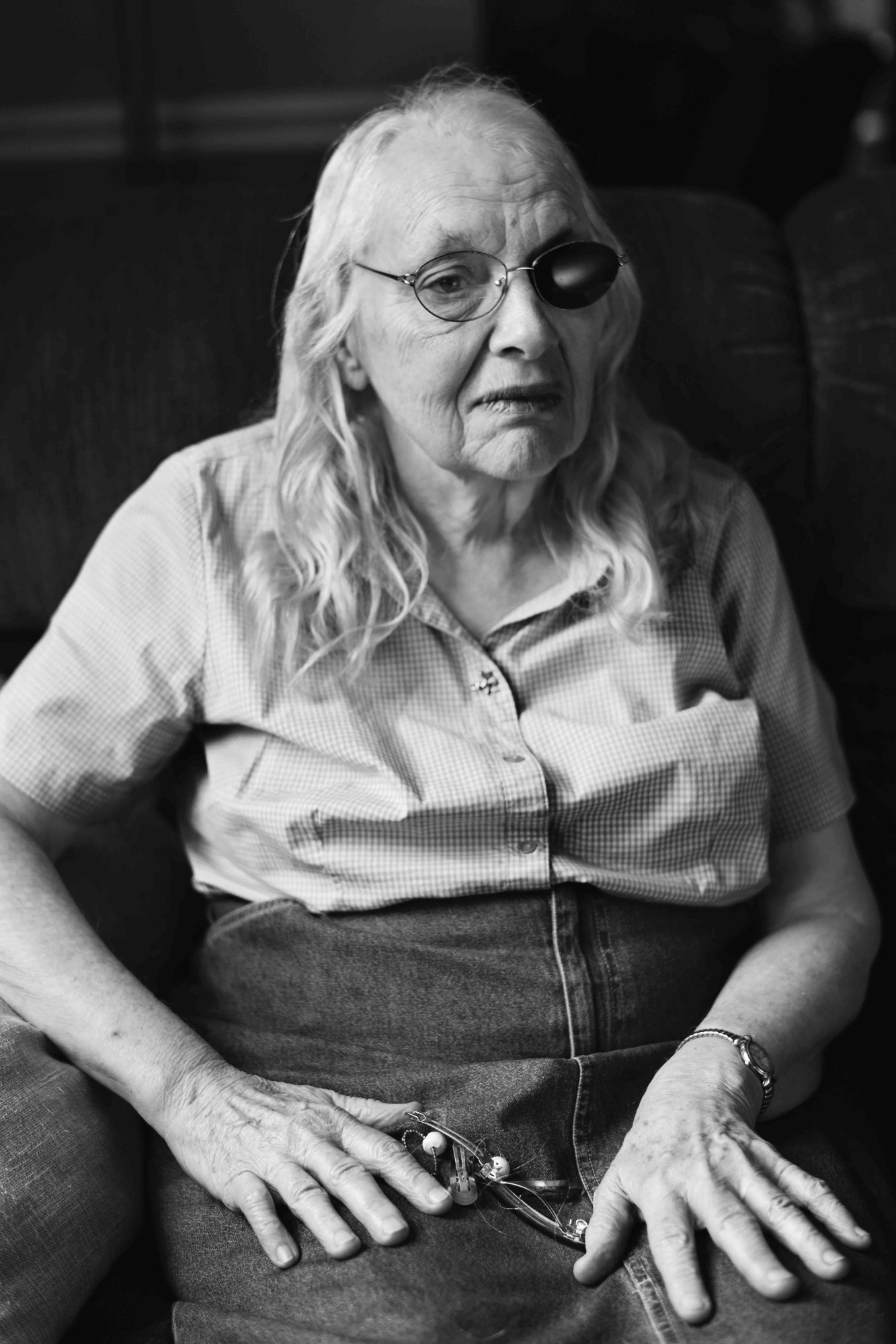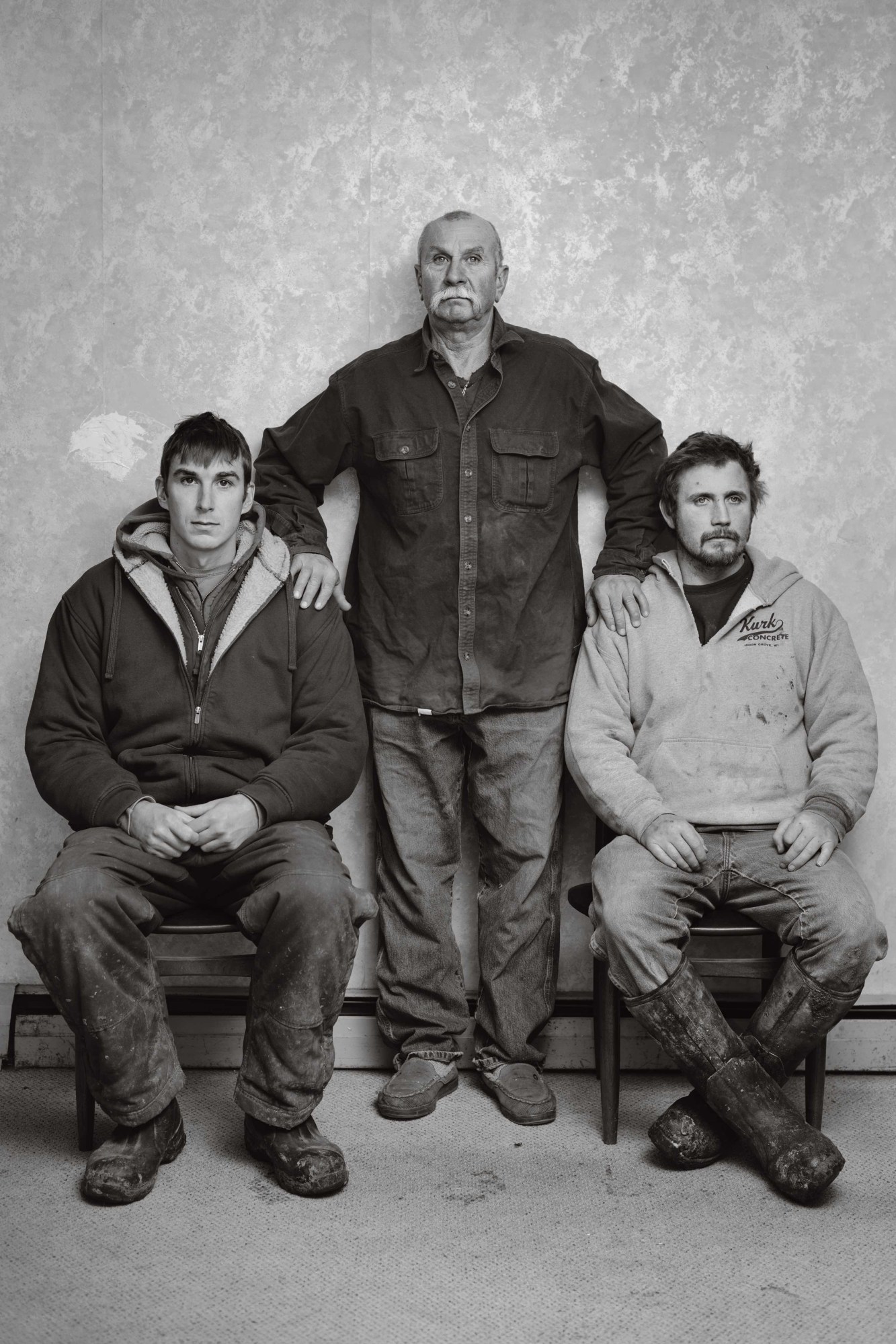This article, by Chris Jennings, was originally published in Aperture Magazine #226, ‘American Destiny.’
In the coldest part of 2014, the photographer Alessandra Sanguinetti went to Black River Falls, Wisconsin, for the first time. Using the local paper as her guide, Sanguinetti documented the rituals of small-town life in formal, black-and-white images. It snowed furiously. Her trip to Wisconsin, she now recalls, was like revisiting a place in her mind.
“The pictures you’re about to see are of people who were once actually alive.” That stark preamble—at once ominous and weirdly redundant—introduces Wisconsin Death Trip (1973), Michael Lesy’s book-length montage of archival photographs and news clippings from Black River Falls at the end of the nineteenth century. The needless reminder that the people depicted in thousands of images by an uncelebrated local photographer named Charles Van Schaickwere “once actually alive” somehow makes them all the more dead.
Lesy’s book, with its punk title and Dada aesthetic, became something of a cult object in the 1970s. It was part of a small tide of art and writing intent on putting some blood and weirdness back into Americans’ sense of their past—of traversing the gulf between then and now that straight history rarely spans. Somehow a copy landed on a coffee table in Argentina, which is where nine-year-old Alessandra Sanguinetti came upon it. “It sent me into a panic,” she remembers. That surely had something to do with the dozens of images of grim young girls, some of them dead, others alive but unaccountably marked off from their schoolmates by black circles, as if preselected for the terrors enumerated on every page. “I suddenly realized I would die,” Sanguinetti recalls. Her next thought was to ask for a camera.
Wisconsin Death Trip chronicles a community stalked by Old Testament levels of suffering and delusion. Cryptic headlines and juxtapositions subvert the usual narratives about rural America. Instead of a historian’s account of the devastation experienced by farming communities during the financial depression of the 1890s, we encounter young Norwegian immigrants “deranged on the subject of religion” and driven to flamboyant suicide by dynamite and locomotive. Instead of Ken Burns’s lonesome fiddle, we hear half-drunk oompah bands. Instead of Dorothea Lange’s dusty saints, we get Mary Sweeney, the notorious “Wisconsin window smasher,” bingeing on cocaine and destroying plate glass throughout the state. It would be hard to tally whether more lives in Black River Falls were claimed by diphtheria, arson, morphine overdose, or gunplay. This is not the frontier of myth. It is a town that both the frontier and the myth raced past, a place of diminishing prospects and long, frozen winters. Flipping the pages, something like a narrative gathers incrementally, depicting a grim slide from economic collapse to depression to lunacy.
The photographs Sanguinetti took in the winter of 2014, and on two subsequent visits, tell a far less gothic story. Black River Falls is doing better than it was in the 1890s. Yet many of the serious, quiet faces she captured would not be out of place on Van Schaick’s glass-plate negatives. Familiar scenes of rural American life—a Catholic church choir, eccentric domestic clutter, a teenage boy wearing his sousaphone like an albatross—seem somehow mysterious, almost ancient or sacred. Nervous currents thrum beneath the surface. There may be madness and great reversals of fortune here, but the stronger impression is of uncertainty, stagnation, and the mollifying rhythms of tradition and the calendar. And of course, the beautiful deathly cold of winter remains unchanged.
Lesy’s book lets the imagination run across a great abyss of time, animating the suffering and hysteria of a long-ago place in all of its strange ambiguity. Sanguinetti’s photographs cover a different sort of distance. Black River Falls is the seat of Jackson County, which helped deliver the traditionally Democratic state of Wisconsin to Donald Trump. At a moment when half the country stands baffled and appalled at the moral and political impulses of the other half, these images offer an unusually intimate look across the divide.






Credits
Text Chris Jennings for Aperture
Photography Alessandra Sanguinetti courtesy the artist and Aperture
